Using a tripod makes it possible to take pictures in conditions that are impossible to obtain freehand. Whether you need more light, a long exposure, or want to frame accurately, a tripod is the solution. I had the opportunity to test the Leofoto Urban LX-324CT tripod with the XB-38 head, here’s what I think.
The Leofoto brand at Miss Digital
Article produced in partnership with Leofoto
It is likely that the Leofoto brand doesn’t tell you much, it is a very young brand in the world of photo accessories since it was born in 2014, emanating from the Chinese company Zhongshan Laitu photographic Equipment Co. Ltd based in Guangdong.
Leofoto has developed a complete range of tripods, monopods and heads for photographers and videographers.
Unlike many Asian productions, these are not entry-level tripods at low prices: on the contrary, the Leofoto catalogue has little to envy in terms of quality to the leaders in the sector (Manfrotto, Gitzo for example) if not a short story.
For this test I chose a tripod and head set from the Leofoto Urban series. The Leofoto range has 8 series that meet different needs. Quite sincerely, there is something to lose as there are so many models. To make my choice I have listed my needs before consulting the catalogue. I wanted to evaluate a tripod:
- who serves me in the city as well as in the wilderness,
- that’s at least as sturdy as my Manfrotto tripods,
- that I can take on trips if necessary (car, plane, motorcycle),
- whose price is still less than 400 euros with the patella.
These constraints translated into technical criteria then gave me:
- a tripod of at least 1.6 meters,
- modular (height, configuration),
- capable of supporting an SLR like a hybrid with a long telephoto lens (type 200-500 mm),
- stable on different terrains (I photograph feet in the water sometimes)
- easily transportable by hand in the city,
- with a 3D patella (I find this setting faster).
I finally opted for the Leofoto Urban LX-324CT model with the XB-38 head.
Leofoto LX-324CT Tripod
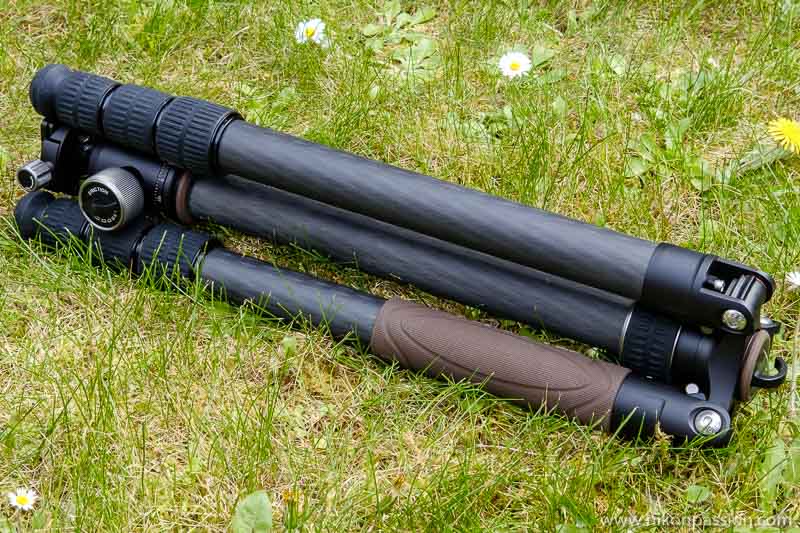
Leofoto Urban LX-324CT tripod in folded position, with its head to the left
The Leofoto Urban LX-324CT tripod features :
- a maximum height of 1.71 metres,
- a minimum height of 21 cm,
- it supports 15 kg,
- it has rubber tips (stable floors) and aluminium pointed tips (soft floors),
- it measures 48 cm when folded and weighs 2 kg.
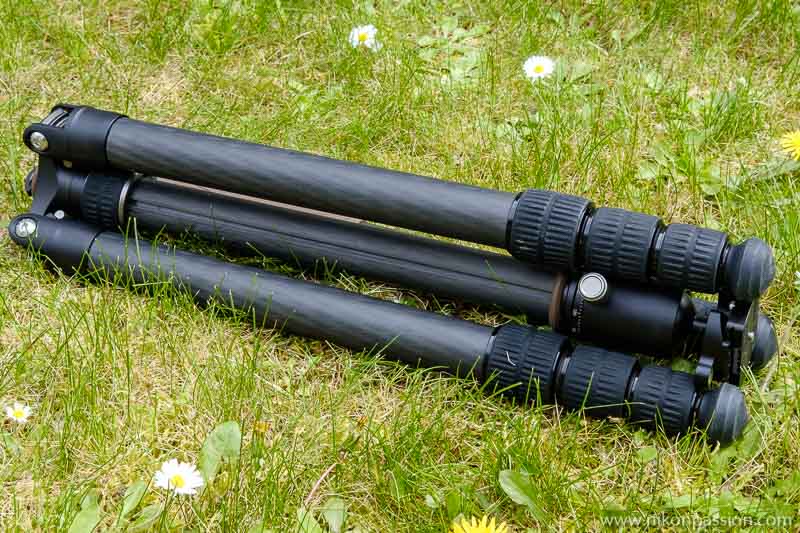
Leofoto Urban LX-324CT tripod in folded position, the other side of the head
The carbon manufacturing (10 layers) allows to reduce the weight (2kg), although the difference with my old Manfrotto 190 in metal is not that important.
The carbon is more comfortable to wear and I felt less cold, especially since one of the legs has a brown insulating rubber lining. However, this coating remains impractical because in order to hold the tripod properly when you carry it by hand, you have to unfold it slightly, which is not practical because the whole thing tends to unfold.
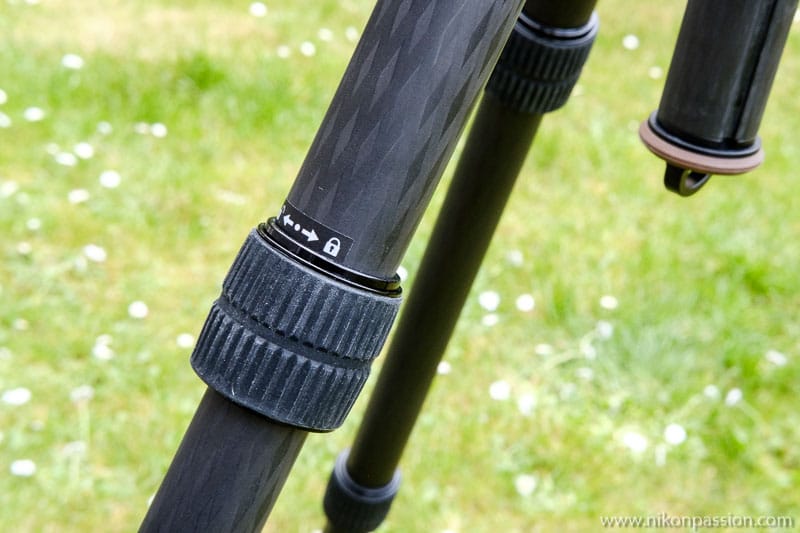
the leg locking ring
The three-legged deployment system is simple to operate. It differs from lever-lock systems (like recent Manfrotto’s) or butterfly screw (like the old Manfrotto’s) since here it is a question of turning a ring to unfold or fold each leg before turning the ring in the opposite direction to lock the position (Leofoto Twist-Lock system). In use I find it fast even if it is always necessary to carry out the movement in three steps:
- turn the ring to unlock,
- pull the leg (or tuck it in),
- turn the ring to lock.
There are two-step mechanisms on some foldable accessories, which avoid turning the ring because it is the leg that turns to lock the position. It’s even faster, however I haven’t seen one on photo tripods yet, the reliability may not be there.
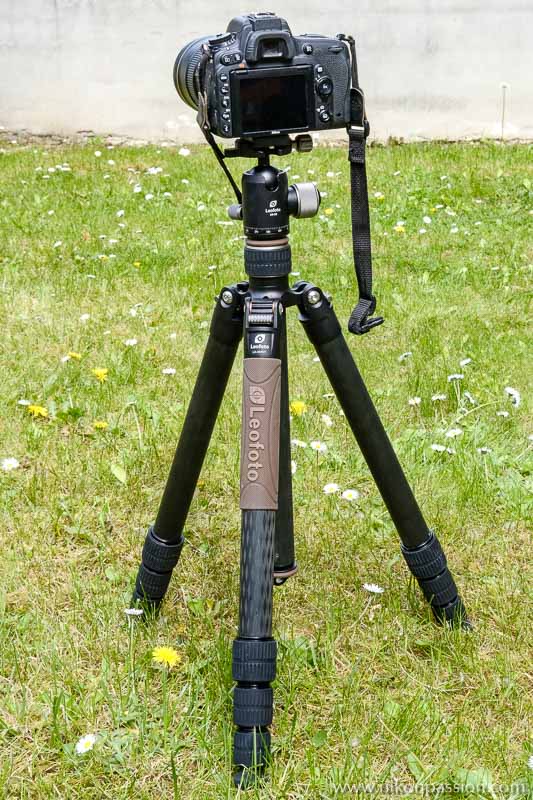
the Leofoto Urban LX-324CT tripod in the classic low position
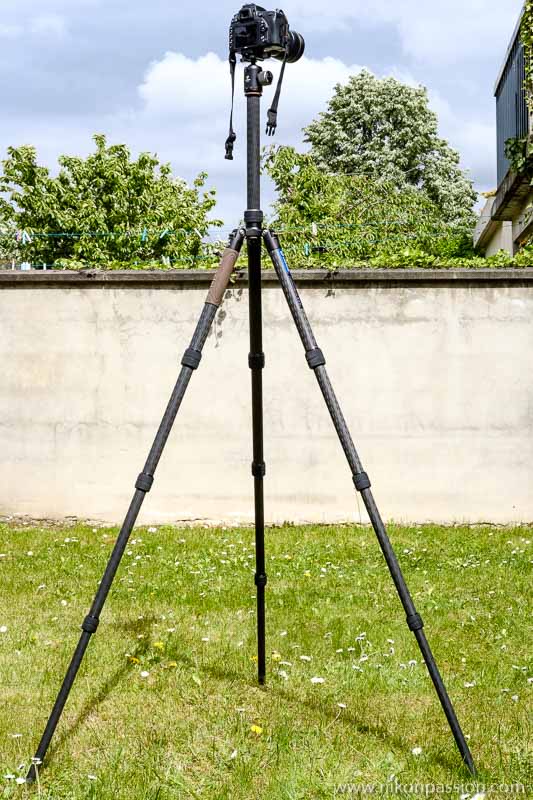
the Leofoto Urban LX-324CT tripod in high position
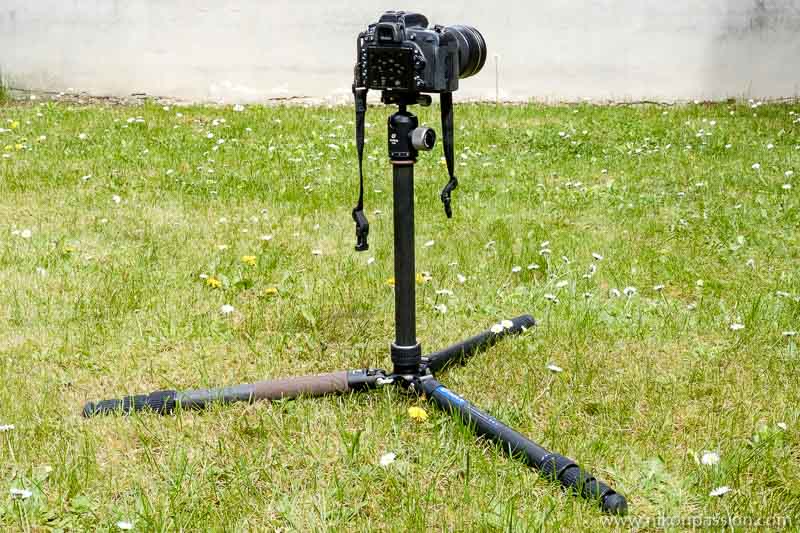
the Leofoto Urban LX-324CT tripod at ground level with the central rod in position
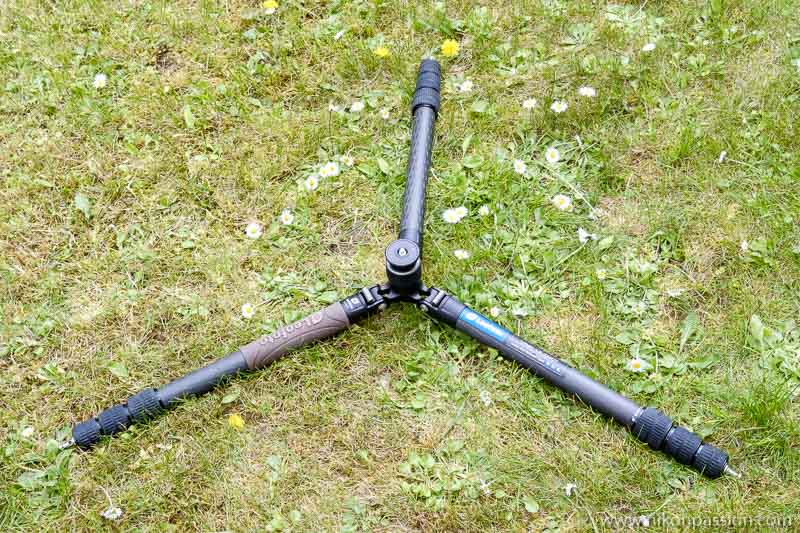
the Leofoto Urban LX-324CT tripod at ground level with the central rod removed
The leg locking mechanism allows for three tilt angles, including an extreme position that allows the box to be placed on the ground or almost on the ground.
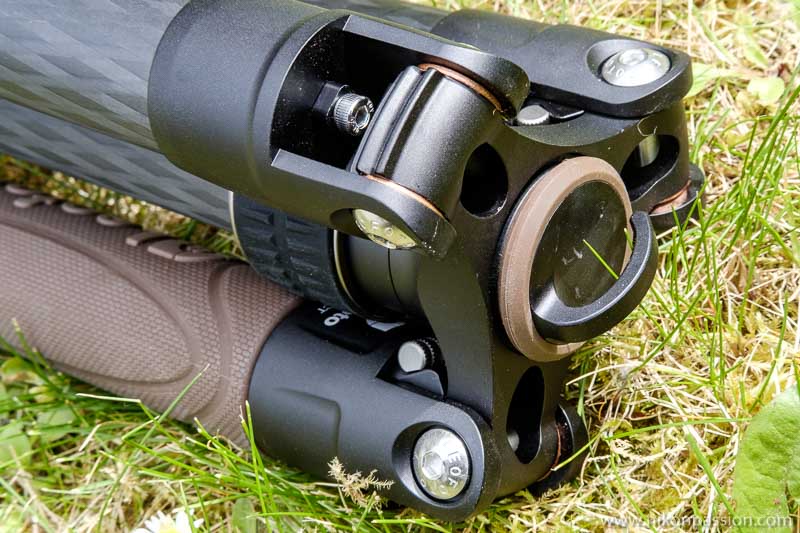
the Leofoto Urban LX-324CT tripod with metal hook
The central column of the tripod has a hook that allows you to hang an accessory (video connector, power supply) as a ballast if you are looking for the greatest possible stability. This metal hook is screwed, it must be replaceable if you lose or break it (but I haven’t found the part number on the distributor’s website yet.).
The Leofoto XB-38 head with quick connection plate BPL-50
This tripod is sold with its XB-38 ball joint. This type of ball joint allows the position to be adjusted with a ball-shaped head in three axes. The result is the same as with a 3D ball head but I find the handling faster in the action.
The 3D head, with its three separate settings, is however more precise depending on how you use the tripod, allowing you to lock one or two positions while the others can still move. All Leofoto tripods come with a head (ball, pendulum or video head), it’s up to you to choose the couple that suits you.
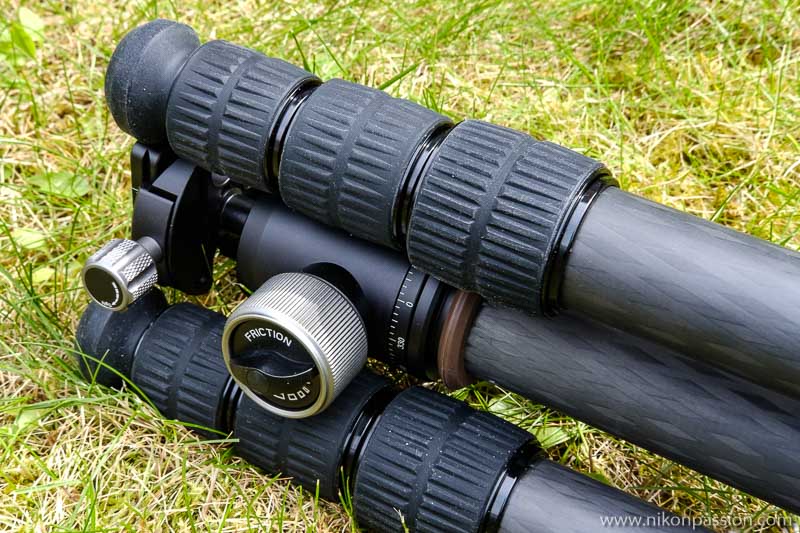
the integrated two-screw friction mechanism
The ball joint adjustment mechanism, with adjustable friction, has two screws. The larger of the two screws is used to set the desired position, while the second, smaller screw is used to block the rotation. This allows you to adjust the position of your camera for panning and then simply rotate the patella-case assembly without changing the position of the patella.
The adjustment located inside the large screw mechanism allows you to adjust the friction: the tighter you tighten it, the more you have to force on the tilting head to move it, it’s a way to manage precise movements as well as to release the whole thing to change position completely in one movement. This mechanism therefore combines the two separate screw controls of the Manfrotto 496RC2 ball head for example.
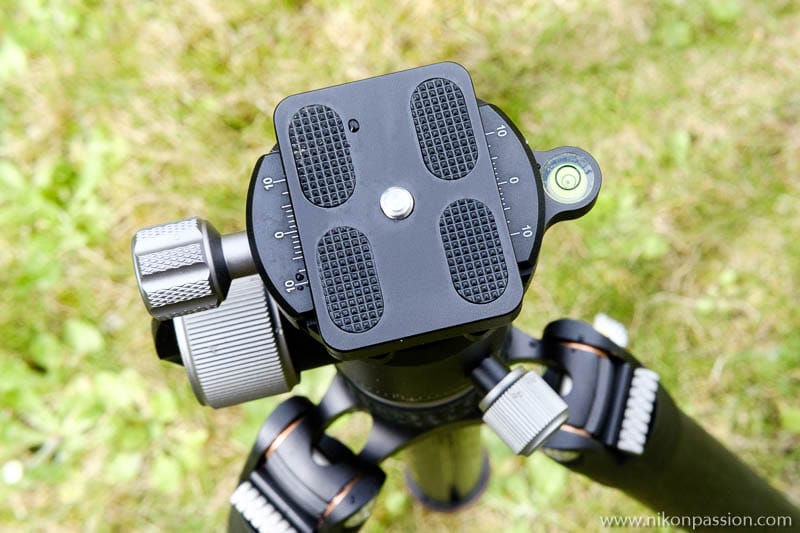
Leofoto tripod test: the BPL-50 turntable
A spirit level integrated in the main board gives you an indication that is unfortunately not very legible once the case is in position. The level is indeed too close to the mounting plate and is hidden by the camera. It’s better to fix the ball with the level before sliding the camera on the turntable, when it’s possible.
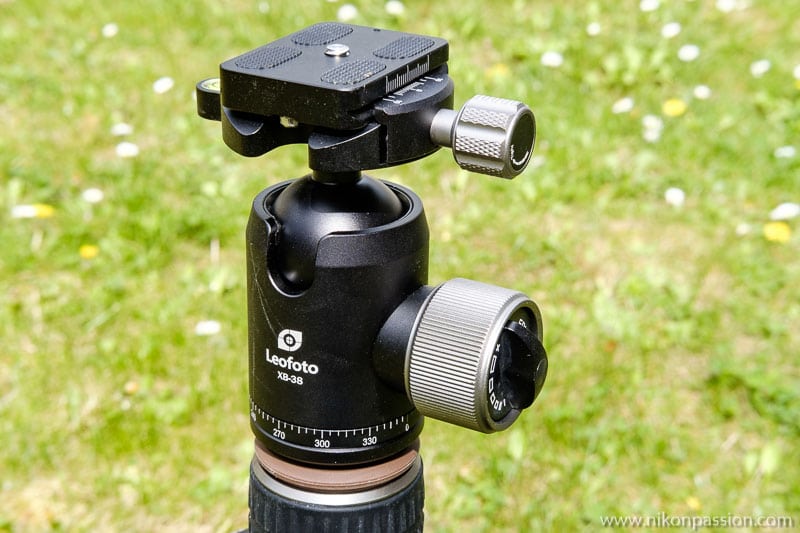
Leofoto tripod test: the XB-38 head
The XB-38 head is equipped with a BPL-50 quick-connect plate that screws onto the body or lens stand, and is Arca-Swiss compatible. Simply slide the assembly onto the head and tighten the retaining screw.
This principle is quick to set up, however, there is a risk of falling if you have not taken care to hold your camera with one hand while you tighten the lock. The Manfrotto turntable locking system, for example, is safer but less convenient to use.
On the other hand the adjustment is very easy since both the ball joint and the plate are graduated and allow you to position your camera carefully. This system also allows you to move the camera body sideways, which can be useful for precise framing without having to change the position of the tripod or head.
Presentation and design
In everyday life the tripod takes up little space when folded, the carrying bag makes it easy to carry and slip into a larger bag like in the trunk of your car.
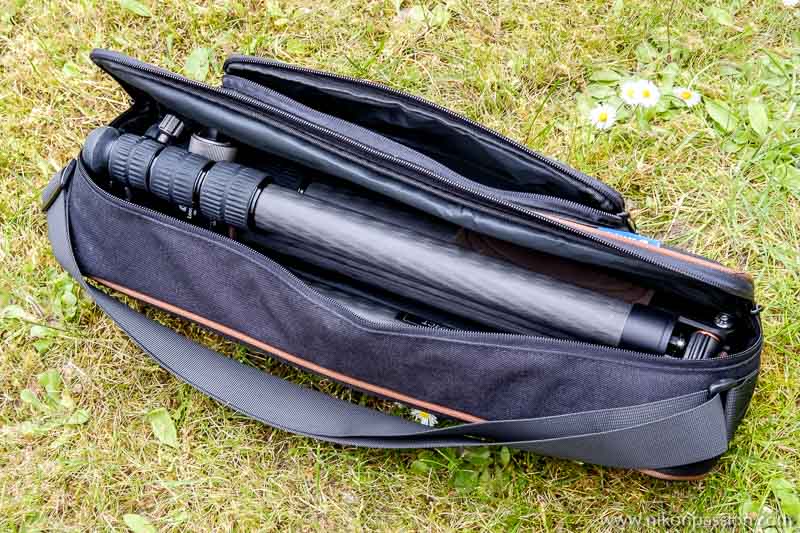
the tripod folded in its bag, the ball joint stays in place.
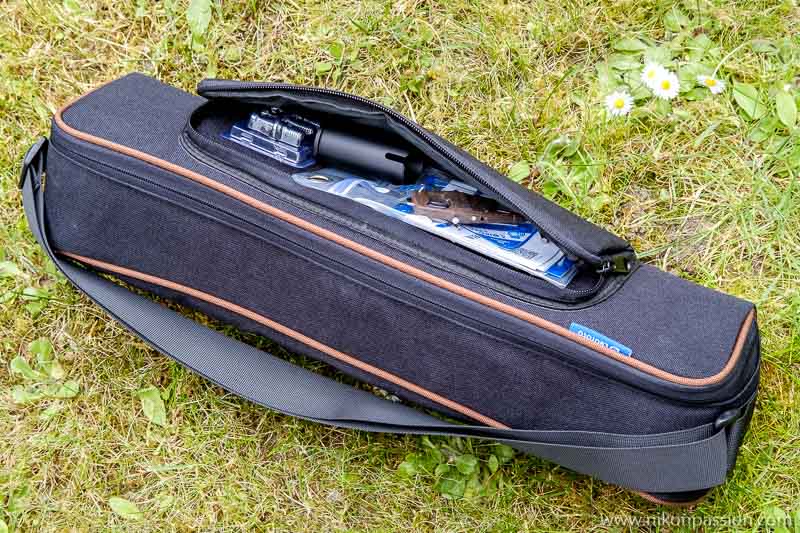
the outside pocket for storing accessories
The finish of this bag is a bit light, I quickly broke the buckle of one of the fasteners of the outside pocket. This often happens to me with other accessories (e.g. backpack) but for a tripod of this price, I think that the manufacturer has to keep an eye on the finish of the bag too.
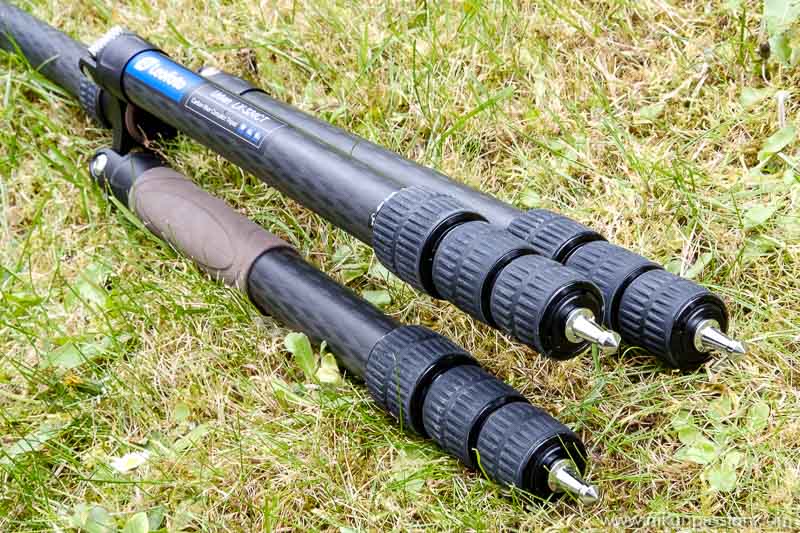
Leofoto tripod test: metal-tipped end caps
Leofoto had the good idea to deliver the tripod with a set of rubber foot caps and a set of metal tip caps. These are more reliable on soft floors where the rubber tips can slip.
These tips are screwed on the base of each leg, so they can be changed very quickly and are replaceable in case of loss. They are equipped with an O-ring seal that prevents the passage of dust and water inside the leg.
Most of the parts that make up this tripod, like other Leofoto models, are removable for cleaning and drying. Each tripod comes with a set of accessories (a short central column, wrenches for each type of screw on the tripod), they are housed in the pocket of the bag.
This package is very well made, the perceived quality is similar to that of competing models and the actual quality, in everyday use, too. It would take a test over time to assure you that the reliability is the same as other brands’ tripods, which I didn’t do, but I’m not worried.
For use
The set is practical and light to handle and transport, the deployment of the legs is fast and reliable, I found no tightening fault in the locked position.
The possibility of climbing high (1.7m) is practical for using the optical or electronic viewfinder of your camera (it is then at eye level) while the position closest to the ground is an asset for amateurs of macro and close-up photography (insects, flowers, small details).
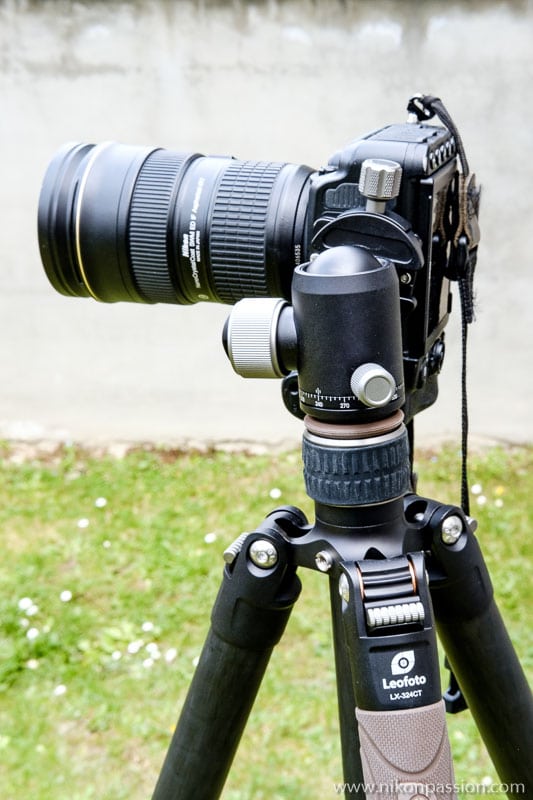
Leofoto tripod: the portrait position
I have used the set in different configurations, including the portrait framing shown in the photo above. The positioning of the head is fast and precise, the locking screw remains however close to the sole of the body with a full format SLR, with bare hand it works very well, with big winter gloves the place will probably miss a little bit.
The positioning of the legs, with the notch system, requires time to adapt. Once you have understood how to release and reposition them, it is quick and – above all – reliable.
Against the competition, this Leofoto tripod is doing pretty well. Offered at less than 400 euros including tax (price list May 2019 379 euros, to be rechecked before purchase), it offers a more interesting technical data sheet than the Manfrotto MK290XTC3-BH (maximum load limited to 5kg, upper space requirement in folded position, lower tariff of 30 euros) while the Manfrotto Element Traveller MKELEB5CF-BH is closer with 8 kg load but a lower maximum height. However, it costs almost 150 euros less. At Gitzo, count more than double the price for the Mountaineer GT3542L to related benefits.
All in all, this Leofoto tripod is a model to consider if you are looking for a reliable, well built, easily transportable and repairable tripod and head assembly. Handling is easy, positioning is fast and the accessories supplied are complete. The few minor faults found are not in any way blocking.
Such a tripod represents a significant investment, but bear in mind that you are entrusting it with your much more expensive photographic equipment and that the slightest fall or breakage is not allowed. Only the notoriety of the young Leofoto brand is not equivalent to that of its competitors, but in the end the product provides the expected service and this is what is important to us.
Learn more about Leofoto tripods on the distributor’s website.
Leofoto tripods are available from most specialist dealers.
The Leofoto brand at Miss Digital
Using a tripod makes it possible to take pictures in conditions that are impossible to obtain freehand. Whether you need more light, a long exposure, or want to frame accurately, a tripod is the solution. I had the opportunity to test the Leofoto Urban LX-324CT tripod with the XB-38 head, here’s what I think.
The Leofoto brand at Miss Digital
Article produced in partnership with Leofoto
It is likely that the Leofoto brand doesn’t tell you much, it is a very young brand in the world of photo accessories since it was born in 2014, emanating from the Chinese company Zhongshan Laitu photographic Equipment Co. Ltd based in Guangdong.
Leofoto has developed a complete range of tripods, monopods and heads for photographers and videographers.
Unlike many Asian productions, these are not entry-level tripods at low prices: on the contrary, the Leofoto catalogue has little to envy in terms of quality to the leaders in the sector (Manfrotto, Gitzo for example) if not a short story.
For this test I chose a tripod and head set from the Leofoto Urban series. The Leofoto range has 8 series that meet different needs. Quite sincerely, there is something to lose as there are so many models. To make my choice I have listed my needs before consulting the catalogue. I wanted to evaluate a tripod:
- who serves me in the city as well as in the wilderness,
- that’s at least as sturdy as my Manfrotto tripods,
- that I can take on trips if necessary (car, plane, motorcycle),
- whose price is still less than 400 euros with the patella.
These constraints translated into technical criteria then gave me:
- a tripod of at least 1.6 meters,
- modular (height, configuration),
- capable of supporting an SLR like a hybrid with a long telephoto lens (type 200-500 mm),
- stable on different terrains (I photograph feet in the water sometimes)
- easily transportable by hand in the city,
- with a 3D patella (I find this setting faster).
I finally opted for the Leofoto Urban LX-324CT model with the XB-38 head.
Leofoto LX-324CT Tripod

Leofoto Urban LX-324CT tripod in folded position, with its head to the left
The Leofoto Urban LX-324CT tripod features :
- a maximum height of 1.71 metres,
- a minimum height of 21 cm,
- it supports 15 kg,
- it has rubber tips (stable floors) and aluminium pointed tips (soft floors),
- it measures 48 cm when folded and weighs 2 kg.

Leofoto Urban LX-324CT tripod in folded position, the other side of the head
The carbon manufacturing (10 layers) allows to reduce the weight (2kg), although the difference with my old Manfrotto 190 in metal is not that important.
The carbon is more comfortable to wear and I felt less cold, especially since one of the legs has a brown insulating rubber lining. However, this coating remains impractical because in order to hold the tripod properly when you carry it by hand, you have to unfold it slightly, which is not practical because the whole thing tends to unfold.

the leg locking ring
The three-legged deployment system is simple to operate. It differs from lever-lock systems (like recent Manfrotto’s) or butterfly screw (like the old Manfrotto’s) since here it is a question of turning a ring to unfold or fold each leg before turning the ring in the opposite direction to lock the position (Leofoto Twist-Lock system). In use I find it fast even if it is always necessary to carry out the movement in three steps:
- turn the ring to unlock,
- pull the leg (or tuck it in),
- turn the ring to lock.
There are two-step mechanisms on some foldable accessories, which avoid turning the ring because it is the leg that turns to lock the position. It’s even faster, however I haven’t seen one on photo tripods yet, the reliability may not be there.

the Leofoto Urban LX-324CT tripod in the classic low position

the Leofoto Urban LX-324CT tripod in high position

the Leofoto Urban LX-324CT tripod at ground level with the central rod in position

the Leofoto Urban LX-324CT tripod at ground level with the central rod removed
The leg locking mechanism allows for three tilt angles, including an extreme position that allows the box to be placed on the ground or almost on the ground.

the Leofoto Urban LX-324CT tripod with metal hook
The central column of the tripod has a hook that allows you to hang an accessory (video connector, power supply) as a ballast if you are looking for the greatest possible stability. This metal hook is screwed, it must be replaceable if you lose or break it (but I haven’t found the part number on the distributor’s website yet.).
The Leofoto XB-38 head with quick connection plate BPL-50
This tripod is sold with its XB-38 ball joint. This type of ball joint allows the position to be adjusted with a ball-shaped head in three axes. The result is the same as with a 3D ball head but I find the handling faster in the action.
The 3D head, with its three separate settings, is however more precise depending on how you use the tripod, allowing you to lock one or two positions while the others can still move. All Leofoto tripods come with a head (ball, pendulum or video head), it’s up to you to choose the couple that suits you.

the integrated two-screw friction mechanism
The ball joint adjustment mechanism, with adjustable friction, has two screws. The larger of the two screws is used to set the desired position, while the second, smaller screw is used to block the rotation. This allows you to adjust the position of your camera for panning and then simply rotate the patella-case assembly without changing the position of the patella.
The adjustment located inside the large screw mechanism allows you to adjust the friction: the tighter you tighten it, the more you have to force on the tilting head to move it, it’s a way to manage precise movements as well as to release the whole thing to change position completely in one movement. This mechanism therefore combines the two separate screw controls of the Manfrotto 496RC2 ball head for example.

Leofoto tripod test: the BPL-50 turntable
A spirit level integrated in the main board gives you an indication that is unfortunately not very legible once the case is in position. The level is indeed too close to the mounting plate and is hidden by the camera. It’s better to fix the ball with the level before sliding the camera on the turntable, when it’s possible.

Leofoto tripod test: the XB-38 head
The XB-38 head is equipped with a BPL-50 quick-connect plate that screws onto the body or lens stand, and is Arca-Swiss compatible. Simply slide the assembly onto the head and tighten the retaining screw.
This principle is quick to set up, however, there is a risk of falling if you have not taken care to hold your camera with one hand while you tighten the lock. The Manfrotto turntable locking system, for example, is safer but less convenient to use.
On the other hand the adjustment is very easy since both the ball joint and the plate are graduated and allow you to position your camera carefully. This system also allows you to move the camera body sideways, which can be useful for precise framing without having to change the position of the tripod or head.
Presentation and design
In everyday life the tripod takes up little space when folded, the carrying bag makes it easy to carry and slip into a larger bag like in the trunk of your car.

the tripod folded in its bag, the ball joint stays in place.

the outside pocket for storing accessories
The finish of this bag is a bit light, I quickly broke the buckle of one of the fasteners of the outside pocket. This often happens to me with other accessories (e.g. backpack) but for a tripod of this price, I think that the manufacturer has to keep an eye on the finish of the bag too.

Leofoto tripod test: metal-tipped end caps
Leofoto had the good idea to deliver the tripod with a set of rubber foot caps and a set of metal tip caps. These are more reliable on soft floors where the rubber tips can slip.
These tips are screwed on the base of each leg, so they can be changed very quickly and are replaceable in case of loss. They are equipped with an O-ring seal that prevents the passage of dust and water inside the leg.
Most of the parts that make up this tripod, like other Leofoto models, are removable for cleaning and drying. Each tripod comes with a set of accessories (a short central column, wrenches for each type of screw on the tripod), they are housed in the pocket of the bag.
This package is very well made, the perceived quality is similar to that of competing models and the actual quality, in everyday use, too. It would take a test over time to assure you that the reliability is the same as other brands’ tripods, which I didn’t do, but I’m not worried.
For use
The set is practical and light to handle and transport, the deployment of the legs is fast and reliable, I found no tightening fault in the locked position.
The possibility of climbing high (1.7m) is practical for using the optical or electronic viewfinder of your camera (it is then at eye level) while the position closest to the ground is an asset for amateurs of macro and close-up photography (insects, flowers, small details).

Leofoto tripod: the portrait position
I have used the set in different configurations, including the portrait framing shown in the photo above. The positioning of the head is fast and precise, the locking screw remains however close to the sole of the body with a full format SLR, with bare hand it works very well, with big winter gloves the place will probably miss a little bit.
The positioning of the legs, with the notch system, requires time to adapt. Once you have understood how to release and reposition them, it is quick and – above all – reliable.
Against the competition, this Leofoto tripod is doing pretty well. Offered at less than 400 euros including tax (price list May 2019 379 euros, to be rechecked before purchase), it offers a more interesting technical data sheet than the Manfrotto MK290XTC3-BH (maximum load limited to 5kg, upper space requirement in folded position, lower tariff of 30 euros) while the Manfrotto Element Traveller MKELEB5CF-BH is closer with 8 kg load but a lower maximum height. However, it costs almost 150 euros less. At Gitzo, count more than double the price for the Mountaineer GT3542L to related benefits.
All in all, this Leofoto tripod is a model to consider if you are looking for a reliable, well built, easily transportable and repairable tripod and head assembly. Handling is easy, positioning is fast and the accessories supplied are complete. The few minor faults found are not in any way blocking.
Such a tripod represents a significant investment, but bear in mind that you are entrusting it with your much more expensive photographic equipment and that the slightest fall or breakage is not allowed. Only the notoriety of the young Leofoto brand is not equivalent to that of its competitors, but in the end the product provides the expected service and this is what is important to us.
Learn more about Leofoto tripods on the distributor’s website.
Leofoto tripods are available from most specialist dealers.
The Leofoto brand at Miss Digital
Using a tripod makes it possible to take pictures in conditions that are impossible to obtain freehand. Whether you need more light, a long exposure, or want to frame accurately, a tripod is the solution. I had the opportunity to test the Leofoto Urban LX-324CT tripod with the XB-38 head, here’s what I think.
The Leofoto brand at Miss Digital
Article produced in partnership with Leofoto
It is likely that the Leofoto brand doesn’t tell you much, it is a very young brand in the world of photo accessories since it was born in 2014, emanating from the Chinese company Zhongshan Laitu photographic Equipment Co. Ltd based in Guangdong.
Leofoto has developed a complete range of tripods, monopods and heads for photographers and videographers.
Unlike many Asian productions, these are not entry-level tripods at low prices: on the contrary, the Leofoto catalogue has little to envy in terms of quality to the leaders in the sector (Manfrotto, Gitzo for example) if not a short story.
For this test I chose a tripod and head set from the Leofoto Urban series. The Leofoto range has 8 series that meet different needs. Quite sincerely, there is something to lose as there are so many models. To make my choice I have listed my needs before consulting the catalogue. I wanted to evaluate a tripod:
- who serves me in the city as well as in the wilderness,
- that’s at least as sturdy as my Manfrotto tripods,
- that I can take on trips if necessary (car, plane, motorcycle),
- whose price is still less than 400 euros with the patella.
These constraints translated into technical criteria then gave me:
- a tripod of at least 1.6 meters,
- modular (height, configuration),
- capable of supporting an SLR like a hybrid with a long telephoto lens (type 200-500 mm),
- stable on different terrains (I photograph feet in the water sometimes)
- easily transportable by hand in the city,
- with a 3D patella (I find this setting faster).
I finally opted for the Leofoto Urban LX-324CT model with the XB-38 head.
Leofoto LX-324CT Tripod

Leofoto Urban LX-324CT tripod in folded position, with its head to the left
The Leofoto Urban LX-324CT tripod features :
- a maximum height of 1.71 metres,
- a minimum height of 21 cm,
- it supports 15 kg,
- it has rubber tips (stable floors) and aluminium pointed tips (soft floors),
- it measures 48 cm when folded and weighs 2 kg.

Leofoto Urban LX-324CT tripod in folded position, the other side of the head
The carbon manufacturing (10 layers) allows to reduce the weight (2kg), although the difference with my old Manfrotto 190 in metal is not that important.
The carbon is more comfortable to wear and I felt less cold, especially since one of the legs has a brown insulating rubber lining. However, this coating remains impractical because in order to hold the tripod properly when you carry it by hand, you have to unfold it slightly, which is not practical because the whole thing tends to unfold.

the leg locking ring
The three-legged deployment system is simple to operate. It differs from lever-lock systems (like recent Manfrotto’s) or butterfly screw (like the old Manfrotto’s) since here it is a question of turning a ring to unfold or fold each leg before turning the ring in the opposite direction to lock the position (Leofoto Twist-Lock system). In use I find it fast even if it is always necessary to carry out the movement in three steps:
- turn the ring to unlock,
- pull the leg (or tuck it in),
- turn the ring to lock.
There are two-step mechanisms on some foldable accessories, which avoid turning the ring because it is the leg that turns to lock the position. It’s even faster, however I haven’t seen one on photo tripods yet, the reliability may not be there.

the Leofoto Urban LX-324CT tripod in the classic low position

the Leofoto Urban LX-324CT tripod in high position

the Leofoto Urban LX-324CT tripod at ground level with the central rod in position

the Leofoto Urban LX-324CT tripod at ground level with the central rod removed
The leg locking mechanism allows for three tilt angles, including an extreme position that allows the box to be placed on the ground or almost on the ground.

the Leofoto Urban LX-324CT tripod with metal hook
The central column of the tripod has a hook that allows you to hang an accessory (video connector, power supply) as a ballast if you are looking for the greatest possible stability. This metal hook is screwed, it must be replaceable if you lose or break it (but I haven’t found the part number on the distributor’s website yet.).
The Leofoto XB-38 head with quick connection plate BPL-50
This tripod is sold with its XB-38 ball joint. This type of ball joint allows the position to be adjusted with a ball-shaped head in three axes. The result is the same as with a 3D ball head but I find the handling faster in the action.
The 3D head, with its three separate settings, is however more precise depending on how you use the tripod, allowing you to lock one or two positions while the others can still move. All Leofoto tripods come with a head (ball, pendulum or video head), it’s up to you to choose the couple that suits you.

the integrated two-screw friction mechanism
The ball joint adjustment mechanism, with adjustable friction, has two screws. The larger of the two screws is used to set the desired position, while the second, smaller screw is used to block the rotation. This allows you to adjust the position of your camera for panning and then simply rotate the patella-case assembly without changing the position of the patella.
The adjustment located inside the large screw mechanism allows you to adjust the friction: the tighter you tighten it, the more you have to force on the tilting head to move it, it’s a way to manage precise movements as well as to release the whole thing to change position completely in one movement. This mechanism therefore combines the two separate screw controls of the Manfrotto 496RC2 ball head for example.

Leofoto tripod test: the BPL-50 turntable
A spirit level integrated in the main board gives you an indication that is unfortunately not very legible once the case is in position. The level is indeed too close to the mounting plate and is hidden by the camera. It’s better to fix the ball with the level before sliding the camera on the turntable, when it’s possible.

Leofoto tripod test: the XB-38 head
The XB-38 head is equipped with a BPL-50 quick-connect plate that screws onto the body or lens stand, and is Arca-Swiss compatible. Simply slide the assembly onto the head and tighten the retaining screw.
This principle is quick to set up, however, there is a risk of falling if you have not taken care to hold your camera with one hand while you tighten the lock. The Manfrotto turntable locking system, for example, is safer but less convenient to use.
On the other hand the adjustment is very easy since both the ball joint and the plate are graduated and allow you to position your camera carefully. This system also allows you to move the camera body sideways, which can be useful for precise framing without having to change the position of the tripod or head.
Presentation and design
In everyday life the tripod takes up little space when folded, the carrying bag makes it easy to carry and slip into a larger bag like in the trunk of your car.

the tripod folded in its bag, the ball joint stays in place.

the outside pocket for storing accessories
The finish of this bag is a bit light, I quickly broke the buckle of one of the fasteners of the outside pocket. This often happens to me with other accessories (e.g. backpack) but for a tripod of this price, I think that the manufacturer has to keep an eye on the finish of the bag too.

Leofoto tripod test: metal-tipped end caps
Leofoto had the good idea to deliver the tripod with a set of rubber foot caps and a set of metal tip caps. These are more reliable on soft floors where the rubber tips can slip.
These tips are screwed on the base of each leg, so they can be changed very quickly and are replaceable in case of loss. They are equipped with an O-ring seal that prevents the passage of dust and water inside the leg.
Most of the parts that make up this tripod, like other Leofoto models, are removable for cleaning and drying. Each tripod comes with a set of accessories (a short central column, wrenches for each type of screw on the tripod), they are housed in the pocket of the bag.
This package is very well made, the perceived quality is similar to that of competing models and the actual quality, in everyday use, too. It would take a test over time to assure you that the reliability is the same as other brands’ tripods, which I didn’t do, but I’m not worried.
For use
The set is practical and light to handle and transport, the deployment of the legs is fast and reliable, I found no tightening fault in the locked position.
The possibility of climbing high (1.7m) is practical for using the optical or electronic viewfinder of your camera (it is then at eye level) while the position closest to the ground is an asset for amateurs of macro and close-up photography (insects, flowers, small details).

Leofoto tripod: the portrait position
I have used the set in different configurations, including the portrait framing shown in the photo above. The positioning of the head is fast and precise, the locking screw remains however close to the sole of the body with a full format SLR, with bare hand it works very well, with big winter gloves the place will probably miss a little bit.
The positioning of the legs, with the notch system, requires time to adapt. Once you have understood how to release and reposition them, it is quick and – above all – reliable.
Against the competition, this Leofoto tripod is doing pretty well. Offered at less than 400 euros including tax (price list May 2019 379 euros, to be rechecked before purchase), it offers a more interesting technical data sheet than the Manfrotto MK290XTC3-BH (maximum load limited to 5kg, upper space requirement in folded position, lower tariff of 30 euros) while the Manfrotto Element Traveller MKELEB5CF-BH is closer with 8 kg load but a lower maximum height. However, it costs almost 150 euros less. At Gitzo, count more than double the price for the Mountaineer GT3542L to related benefits.
All in all, this Leofoto tripod is a model to consider if you are looking for a reliable, well built, easily transportable and repairable tripod and head assembly. Handling is easy, positioning is fast and the accessories supplied are complete. The few minor faults found are not in any way blocking.
Such a tripod represents a significant investment, but bear in mind that you are entrusting it with your much more expensive photographic equipment and that the slightest fall or breakage is not allowed. Only the notoriety of the young Leofoto brand is not equivalent to that of its competitors, but in the end the product provides the expected service and this is what is important to us.
Learn more about Leofoto tripods on the distributor’s website.
Leofoto tripods are available from most specialist dealers.
The Leofoto brand at Miss Digital
Using a tripod makes it possible to take pictures in conditions that are impossible to obtain freehand. Whether you need more light, a long exposure, or want to frame accurately, a tripod is the solution. I had the opportunity to test the Leofoto Urban LX-324CT tripod with the XB-38 head, here’s what I think.
The Leofoto brand at Miss Digital
Article produced in partnership with Leofoto
It is likely that the Leofoto brand doesn’t tell you much, it is a very young brand in the world of photo accessories since it was born in 2014, emanating from the Chinese company Zhongshan Laitu photographic Equipment Co. Ltd based in Guangdong.
Leofoto has developed a complete range of tripods, monopods and heads for photographers and videographers.
Unlike many Asian productions, these are not entry-level tripods at low prices: on the contrary, the Leofoto catalogue has little to envy in terms of quality to the leaders in the sector (Manfrotto, Gitzo for example) if not a short story.
For this test I chose a tripod and head set from the Leofoto Urban series. The Leofoto range has 8 series that meet different needs. Quite sincerely, there is something to lose as there are so many models. To make my choice I have listed my needs before consulting the catalogue. I wanted to evaluate a tripod:
- who serves me in the city as well as in the wilderness,
- that’s at least as sturdy as my Manfrotto tripods,
- that I can take on trips if necessary (car, plane, motorcycle),
- whose price is still less than 400 euros with the patella.
These constraints translated into technical criteria then gave me:
- a tripod of at least 1.6 meters,
- modular (height, configuration),
- capable of supporting an SLR like a hybrid with a long telephoto lens (type 200-500 mm),
- stable on different terrains (I photograph feet in the water sometimes)
- easily transportable by hand in the city,
- with a 3D patella (I find this setting faster).
I finally opted for the Leofoto Urban LX-324CT model with the XB-38 head.
Leofoto LX-324CT Tripod

Leofoto Urban LX-324CT tripod in folded position, with its head to the left
The Leofoto Urban LX-324CT tripod features :
- a maximum height of 1.71 metres,
- a minimum height of 21 cm,
- it supports 15 kg,
- it has rubber tips (stable floors) and aluminium pointed tips (soft floors),
- it measures 48 cm when folded and weighs 2 kg.

Leofoto Urban LX-324CT tripod in folded position, the other side of the head
The carbon manufacturing (10 layers) allows to reduce the weight (2kg), although the difference with my old Manfrotto 190 in metal is not that important.
The carbon is more comfortable to wear and I felt less cold, especially since one of the legs has a brown insulating rubber lining. However, this coating remains impractical because in order to hold the tripod properly when you carry it by hand, you have to unfold it slightly, which is not practical because the whole thing tends to unfold.

the leg locking ring
The three-legged deployment system is simple to operate. It differs from lever-lock systems (like recent Manfrotto’s) or butterfly screw (like the old Manfrotto’s) since here it is a question of turning a ring to unfold or fold each leg before turning the ring in the opposite direction to lock the position (Leofoto Twist-Lock system). In use I find it fast even if it is always necessary to carry out the movement in three steps:
- turn the ring to unlock,
- pull the leg (or tuck it in),
- turn the ring to lock.
There are two-step mechanisms on some foldable accessories, which avoid turning the ring because it is the leg that turns to lock the position. It’s even faster, however I haven’t seen one on photo tripods yet, the reliability may not be there.

the Leofoto Urban LX-324CT tripod in the classic low position

the Leofoto Urban LX-324CT tripod in high position

the Leofoto Urban LX-324CT tripod at ground level with the central rod in position

the Leofoto Urban LX-324CT tripod at ground level with the central rod removed
The leg locking mechanism allows for three tilt angles, including an extreme position that allows the box to be placed on the ground or almost on the ground.

the Leofoto Urban LX-324CT tripod with metal hook
The central column of the tripod has a hook that allows you to hang an accessory (video connector, power supply) as a ballast if you are looking for the greatest possible stability. This metal hook is screwed, it must be replaceable if you lose or break it (but I haven’t found the part number on the distributor’s website yet.).
The Leofoto XB-38 head with quick connection plate BPL-50
This tripod is sold with its XB-38 ball joint. This type of ball joint allows the position to be adjusted with a ball-shaped head in three axes. The result is the same as with a 3D ball head but I find the handling faster in the action.
The 3D head, with its three separate settings, is however more precise depending on how you use the tripod, allowing you to lock one or two positions while the others can still move. All Leofoto tripods come with a head (ball, pendulum or video head), it’s up to you to choose the couple that suits you.

the integrated two-screw friction mechanism
The ball joint adjustment mechanism, with adjustable friction, has two screws. The larger of the two screws is used to set the desired position, while the second, smaller screw is used to block the rotation. This allows you to adjust the position of your camera for panning and then simply rotate the patella-case assembly without changing the position of the patella.
The adjustment located inside the large screw mechanism allows you to adjust the friction: the tighter you tighten it, the more you have to force on the tilting head to move it, it’s a way to manage precise movements as well as to release the whole thing to change position completely in one movement. This mechanism therefore combines the two separate screw controls of the Manfrotto 496RC2 ball head for example.

Leofoto tripod test: the BPL-50 turntable
A spirit level integrated in the main board gives you an indication that is unfortunately not very legible once the case is in position. The level is indeed too close to the mounting plate and is hidden by the camera. It’s better to fix the ball with the level before sliding the camera on the turntable, when it’s possible.

Leofoto tripod test: the XB-38 head
The XB-38 head is equipped with a BPL-50 quick-connect plate that screws onto the body or lens stand, and is Arca-Swiss compatible. Simply slide the assembly onto the head and tighten the retaining screw.
This principle is quick to set up, however, there is a risk of falling if you have not taken care to hold your camera with one hand while you tighten the lock. The Manfrotto turntable locking system, for example, is safer but less convenient to use.
On the other hand the adjustment is very easy since both the ball joint and the plate are graduated and allow you to position your camera carefully. This system also allows you to move the camera body sideways, which can be useful for precise framing without having to change the position of the tripod or head.
Presentation and design
In everyday life the tripod takes up little space when folded, the carrying bag makes it easy to carry and slip into a larger bag like in the trunk of your car.

the tripod folded in its bag, the ball joint stays in place.

the outside pocket for storing accessories
The finish of this bag is a bit light, I quickly broke the buckle of one of the fasteners of the outside pocket. This often happens to me with other accessories (e.g. backpack) but for a tripod of this price, I think that the manufacturer has to keep an eye on the finish of the bag too.

Leofoto tripod test: metal-tipped end caps
Leofoto had the good idea to deliver the tripod with a set of rubber foot caps and a set of metal tip caps. These are more reliable on soft floors where the rubber tips can slip.
These tips are screwed on the base of each leg, so they can be changed very quickly and are replaceable in case of loss. They are equipped with an O-ring seal that prevents the passage of dust and water inside the leg.
Most of the parts that make up this tripod, like other Leofoto models, are removable for cleaning and drying. Each tripod comes with a set of accessories (a short central column, wrenches for each type of screw on the tripod), they are housed in the pocket of the bag.
This package is very well made, the perceived quality is similar to that of competing models and the actual quality, in everyday use, too. It would take a test over time to assure you that the reliability is the same as other brands’ tripods, which I didn’t do, but I’m not worried.
For use
The set is practical and light to handle and transport, the deployment of the legs is fast and reliable, I found no tightening fault in the locked position.
The possibility of climbing high (1.7m) is practical for using the optical or electronic viewfinder of your camera (it is then at eye level) while the position closest to the ground is an asset for amateurs of macro and close-up photography (insects, flowers, small details).

Leofoto tripod: the portrait position
I have used the set in different configurations, including the portrait framing shown in the photo above. The positioning of the head is fast and precise, the locking screw remains however close to the sole of the body with a full format SLR, with bare hand it works very well, with big winter gloves the place will probably miss a little bit.
The positioning of the legs, with the notch system, requires time to adapt. Once you have understood how to release and reposition them, it is quick and – above all – reliable.
Against the competition, this Leofoto tripod is doing pretty well. Offered at less than 400 euros including tax (price list May 2019 379 euros, to be rechecked before purchase), it offers a more interesting technical data sheet than the Manfrotto MK290XTC3-BH (maximum load limited to 5kg, upper space requirement in folded position, lower tariff of 30 euros) while the Manfrotto Element Traveller MKELEB5CF-BH is closer with 8 kg load but a lower maximum height. However, it costs almost 150 euros less. At Gitzo, count more than double the price for the Mountaineer GT3542L to related benefits.
All in all, this Leofoto tripod is a model to consider if you are looking for a reliable, well built, easily transportable and repairable tripod and head assembly. Handling is easy, positioning is fast and the accessories supplied are complete. The few minor faults found are not in any way blocking.
Such a tripod represents a significant investment, but bear in mind that you are entrusting it with your much more expensive photographic equipment and that the slightest fall or breakage is not allowed. Only the notoriety of the young Leofoto brand is not equivalent to that of its competitors, but in the end the product provides the expected service and this is what is important to us.
Learn more about Leofoto tripods on the distributor’s website.
Leofoto tripods are available from most specialist dealers.
The Leofoto brand at Miss Digital

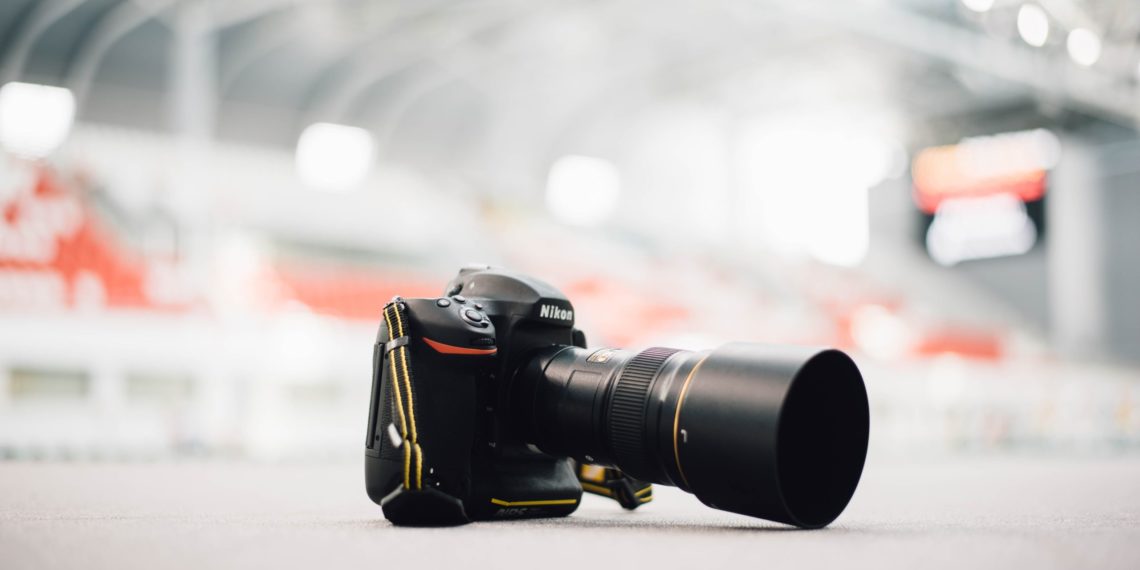
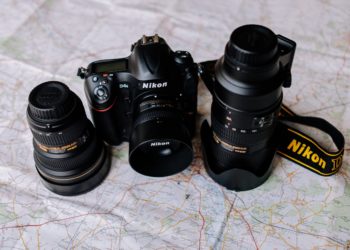
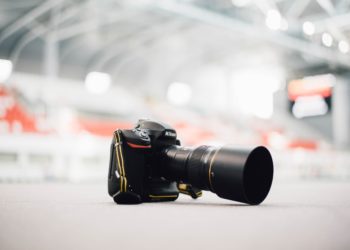



Discussion about this post